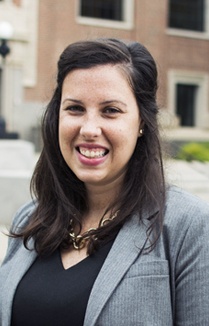 When you are thinking about filing a bankruptcy, consumers have two choices. To file a chapter 7 bankruptcy or a chapter 13 bankruptcy. There are other types of bankruptcies that you might hear about in the news, such as the bankruptcies Donald Trump has filed. Trump filed bankruptcy on his businesses and not on his personal debt. He filed a chapter 11 bankruptcy, a bankruptcy that is done to deal with business debt. For this, we will stick to discussing chapter 7 and chapter 13 bankruptcy.
When you are thinking about filing a bankruptcy, consumers have two choices. To file a chapter 7 bankruptcy or a chapter 13 bankruptcy. There are other types of bankruptcies that you might hear about in the news, such as the bankruptcies Donald Trump has filed. Trump filed bankruptcy on his businesses and not on his personal debt. He filed a chapter 11 bankruptcy, a bankruptcy that is done to deal with business debt. For this, we will stick to discussing chapter 7 and chapter 13 bankruptcy.
Chapter 7 Bankruptcy
Chapter 7 bankruptcy is known as a liquidation bankruptcy. A chapter 7 bankruptcy discharges all eligible debt, meaning that you will no longer be legally responsible for the debt at the time of discharge. The bankruptcy will discharge medical debt, credit card debt, most utility debt, unsecured bank loans, past due rent etc. The chapter 7 bankruptcy will most likely not solve your tax debt or student loan debt.
To qualify for a chapter 7 you must meet income guidelines. Your household has to be under the median income for the state of Minnesota to qualify for a chapter 7. Your Bankruptcy Attorney will calculate out your median income by looking at what you have made the last six months to calculate your yearly income. If you are over the median income then you will not be able to file a chapter 7 and will instead do a chapter 13 bankruptcy. This median income calculation is something you will want an attorney to calculate for you. There are other factors that can be calculated into your median income such as high medical or transportation costs that can help you to qualify for a chapter 7 bankruptcy.
A chapter 7 bankruptcy takes about three months from filing to discharge. Most of the work for the bankruptcy is done up front at the appointments before your Bankruptcy Lawyer files your case. After we file your case we will attend a Meeting of Creditors together. This meeting takes place at the courthouse with a trustee. The trustee is an attorney assigned to oversee the paperwork in your case. Their job is to unsure the paperwork is filed out correctly and to distribute any assets to creditors. Most chapter 7 bankruptcies are no asset cases, meaning you will get to keep all your assets because you don’t own more property than the court allows a person to keep. After the meeting of creditors your case will remain open with the court for another 60 days. In this period of time very little happens, it gives the trustee time to finish administrating your case, and is the period of time creditors could dispute your bankruptcy. Creditors that dispute their debt included in a bankruptcy is uncommon, it usually happens because they allege fraud before the bankruptcy was filed.
Chapter 13 Bankruptcy
Chapter 13 bankruptcy is a payment plan with the court. You will be paying back a portion of your debt. This bankruptcy will be able to solve tax debt, back child support, mortgage arrears while dealing with your other debt, credit cards, medical bills etc. The chapter 13 payment is calculated out by looking at your disposable income. Your disposable income is what is left at the end of the month after you pay all your bills. Our Bankruptcy Service will calculate out your income and expenses down to the dollar. We will also look to see what debts you are required to pay in full under the chapter 13. Under the chapter 13 you are required to pay in full recent tax liability and mortgage arrears and if you choose to include your vehicle payment. That means we will have to make sure you have the disposable income to afford your plan payment.
Within chapter 13 there is another choice, the length of your plan. The standard length for a chapter 13 plan is five years. That means you will make your monthly payment to the chapter 13 trustee for five years. If you are under the median income for the state of Minnesota then you can chose to do a three year plan. The three year plan payment will always be higher than if you stretched out your payment to five years, but you are done quicker and can start to build your credit sooner.
Many people like to include their car payment in the plan. To do this means you are stretching out the loan of your vehicle for either the three year plan or the five year plan. This will lower your vehicle payment and can make your payment plan more affordable. At the end of paying the chapter 13 plan you will get the title released from the lender. Again most of the work for a chapter 13 is upfront, in the first appointment before our Law Firm files the case, and then in the following two or three months before your chapter 13 plan gets confirmed by the judge.
When we set up your chapter 13 payment, let’s say at $500 a month for five years, it is a proposed plan. The trustee has to agree to that plan payment as well as the creditors. Sometimes it takes a few months to work out the plan payment with everyone. Usually the proposed plan payment stays right around the payment that gets confirmed with the court. Once the payment gets confirmed that is what your plan payment will be for the length of the plan unless you modify it. Three or five year plans are a long period of time and things can change during that period. Your plan can get modified to better reflect your current income and expenses. You aren’t necessarily locked into the plan payment that is confirmed with the court.
Deciding whether to do a chapter 7 or a chapter 13 is something that is very difficult to decide on without the help of a Bankruptcy Law Firm. Even in pretty straightforward cases there sometimes can be a reason to do a chapter 7 over a chapter 13 or vice versa. A free consultation with our office can help lay out your options and get you relief from your creditors, and a path to moving forward. Contact us for further information by calling 612-843-0529 and visiting with us at our Maple Grove location.
Kain & Scott, P.A.100 South Fifth Street #1900
Minneapolis, MN 55402
(612) 843-0527
info@kainscott.com


